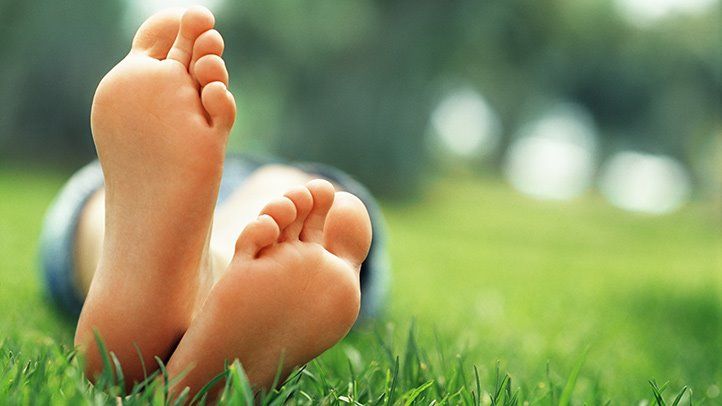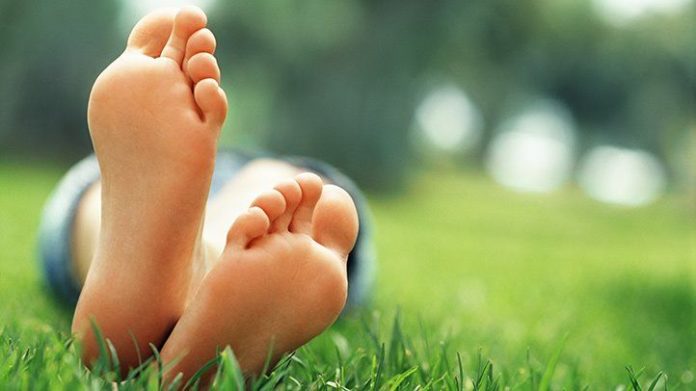A bunion is a physical deformity that occurs when, due to outside pressure on the big toe joint, the big toe moves and points toward the second toe. This deformity causes a bony bump on the outside edge of the big toe, near its base.
The condition can affect anyone, but it’s associated with wearing high-heeled or narrow shoes.
Causes and Risk Factors of Bunions
- Wearing high-heeled shoes that force your toes into the front of your shoes
- Wearing tight-fitting shoes that are too narrow or too pointed
- Having rheumatoid arthritis
- Having a family history of a problem with the structure or anatomy of your foot
A genetic predisposition in certain foot shapes and structures may lead to bunions. Bunions appear to run in families.
Other conditions or situations that contribute to bunion development include having flat feet, low arches, loose joints or tendons, or other foot injuries.
Bunions can also be caused by other health problems affecting the feet, including gout, and psoriatic arthritis. People with connective tissue disorders, such as Marfan syndrome and Ehlers-Danlos syndrome, and those with Down syndrome may be at an increased risk for developing bunions, as are people who have a muscle imbalance in the feet due to conditions such as cerebral palsy or Charcot-Marie-Tooth disorder.
If you have any of these underlying foot health issues, wearing tight shoes may exacerbate a developing bunion by keeping the big toe in the incorrect position.
How Are Bunions Diagnosed?
Your doctor should be able to diagnose a bunion after a normal physical examination of the foot.
After an exam, your doctor may take an X-ray of your foot to determine the best treatment approach.
You may need an ultrasound if there is numbness or tingling; this test can confirm whether there’s nerve damage in the foot.
Prognosis of Bunions
If you have mild symptoms or a small bunion, the prognosis is excellent. If your bunion requires surgical removal, the prognosis is also excellent. Surgery can provide long-term relief from the discomfort and deformity a bunion causes.
Treatment and Medication Options for Bunions
The treatment of bunions is typically based on the severity of the deformity and symptoms.
The initial treatment of bunions, particularly those that are small or have mild symptoms, is normally conservative and focuses on relieving symptoms. These nonsurgical measures may include the following:
- Wearing wide-toed shoes
- Having shoes professionally stretched to provide more room
- Using padded shoe inserts or other orthotic devices that help distribute pressure evenly while you walk
- Avoiding activities that cause pain, such as sports
- Applying warm soaks or ice packs
Over-the-counter nonmedicated bunion pads or cushions are designed to act as a buffer between your foot and your shoe to ease any pain or discomfort.
Your doctor may also recommend custom-fit toe spacers or bunion splints. These special corrective devices slip into your shoes to push the big toe back into its proper position.
If these approaches fail to relieve the pain and discomfort caused by your bunions, or if the bunion leads to other problems, your doctor may recommend surgery. There are many surgical procedures that can resolve bunions.
In a bunionectomy, a surgeon shaves off the excess bone on the outside of your first metatarsal bone (the bone in the foot just below the big toe) and realigns the muscles, tendons, and ligaments of your big toe.
If your bunion is moderately deformed, your surgeon will also cut the bone close to the metatarsal head (the top of the first metatarsal bone) to move it into the proper position. Your bone will then be held in place with screws or pins while you heal.
For severe bunions, your surgeon will cut away the excess bone of your first metatarsal head and a wedge-shaped piece of bone at the base of your first metatarsal. Your surgeon will then realign your metatarsal bone and secure it in place with screws or pins before correcting your muscles, tendons, and ligaments.
It’s possible that you’ll need to be on crutches for a short period of time in order to keep your weight off your foot. As mentioned above, full recovery — including the ability to walk without pain or discomfort — can take weeks to months.
To prevent bunions from returning, you’ll need to wear proper shoes after surgery. For most people, it’s unrealistic to expect to wear narrow or high-heeled shoes after bunion surgery.
Medication Options
There are no medications that can cure or resolve bunions on their own. However, if your bunions are causing pain, your doctor may recommend over-the-counter nonsteroidal anti-inflammatory drugs such as ibuprofen (Advil, Motrin) or naproxen (Aleve).
For more severe bunion pain, your doctor may administer cortisone injections.


How Nutrition Can Affect Your Feet
Prevention of Bunions
The best way to prevent bunions is to wear shoes with a wide toe area and extra space between the tip of your longest toe and the end of the shoe. Shoes should also conform to the shape of your feet, without too much pressure.
Wearing proper shoes is particularly important if you have a family history of bunions or if you have another health condition that increases your risk for developing them.
Doing so may not prevent bunions entirely, but it can help reduce your risk for them.
Research and Statistics: Who Has Bunions?
RELATED: How to Treat Bursitis, Whether Caused by Psoriatic Arthritis or Not
Related Conditions and Causes of Bunions
People with flat feet, low arches, loose joints or tendons, or other foot injuries may be at an increased risk for bunions.
Bunions can also be caused by other health problems affecting the feet, including gout, psoriatic arthritis, and rheumatoid arthritis (RA).
In addition to placing you at an increased risk for bunions, gout and RA are sometimes misdiagnosed as bunions, and vice versa.
Although gout can strike in any joint, it most commonly affects the big toe, and its symptoms (pain, inflammation, and redness) are similar to those of a painful bunion.
RA and osteoarthritis affect multiple joints, but they both often first develop in the smaller joints of the feet, including those in the big toe.
People with connective tissue disorders, such as Marfan syndrome and Ehlers-Danlos syndrome, and those with Down syndrome may also be at an increased risk for developing bunions, as are people who have a muscle imbalance in the feet due to conditions such as a stroke, cerebral palsy, or myelomeningocele.
Resources We Love
The American Podiatric Medicine Association’s site can help you find a podiatrist and learn more about conditions of the feet and ankles.
The American Orthopaedic Foot and Ankle Society maintains FootcareMD.org, a site that provides comprehensive information on a variety of conditions affecting the feet (it also includes a symptom checker).
Editorial Sources and Fact-Checking
References
Bunions. OrthoInfo.
Bunions. Mayo Clinic. October 22, 2019.
Kuhn J, Alvi F. Hallux Valgus. StatPearls. August 10, 2020.
Diagnosing Bunions. NYU Langone Health.
Bunion. Harvard Health Publishing. April 2019.
What to Do About Bunions. Harvard Health Publishing. June 2, 2020.
Golightly YM, Hannan MT, Dufour AB, et al. Racial Differences in Foot Disorders and Foot Type: The Johnston County Osteoarthritis Project. Arthritis Care & Research. November 2012.
Golightly YM, Hannan MT, Dufour AB, et al. Factors Associated With Hallux Valgus in a Community‐Based Cross‐Sectional Study of Adults With and Without Osteoarthritis. Arthritis Care & Research. June 2015.
Is It a Bunion or Something Else? CreakyJoints. July 2, 2019.
Sources
7 Ways to Ease Bunion Pain Without Surgery. Cleveland Clinic. October 11, 2019.













































